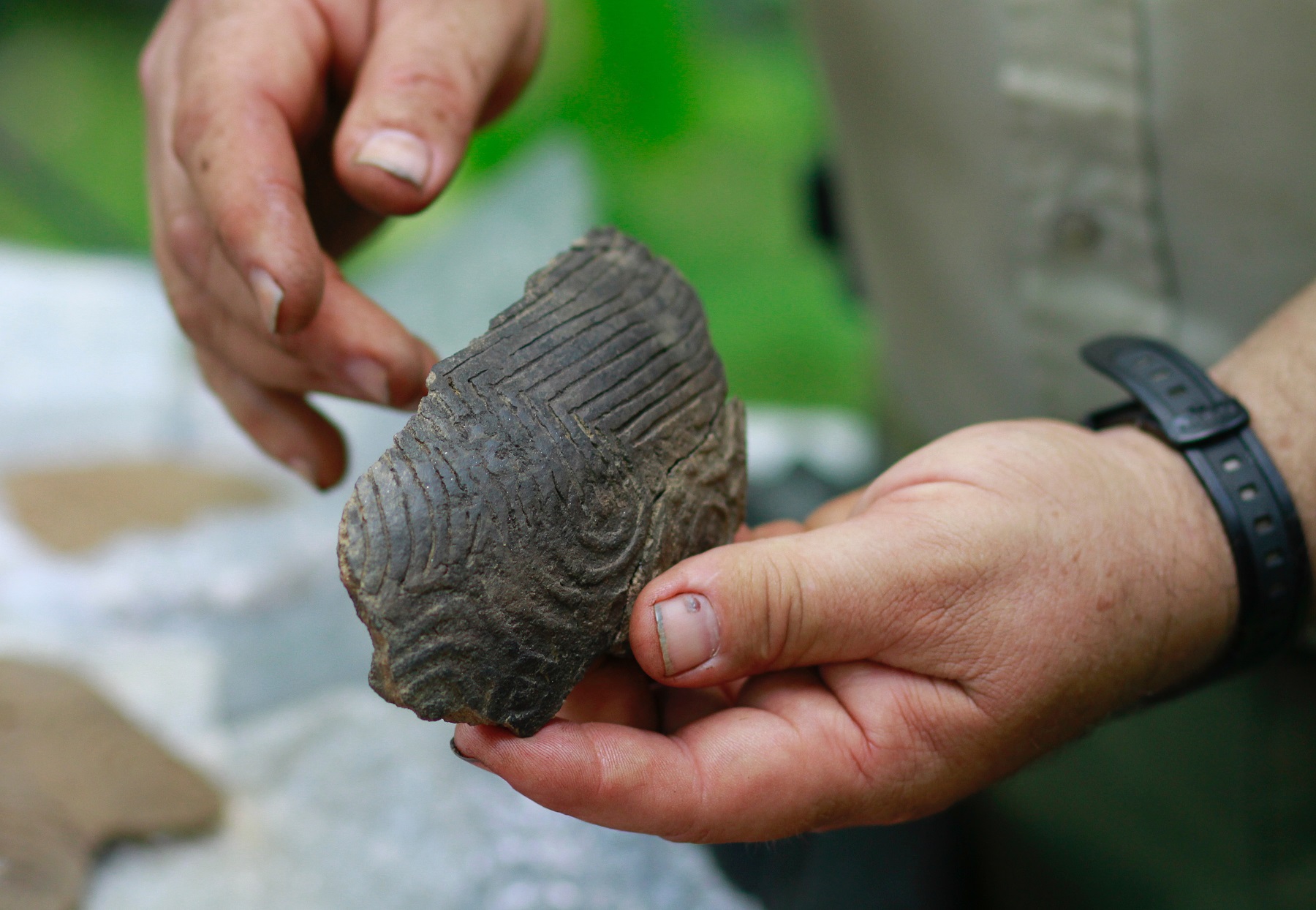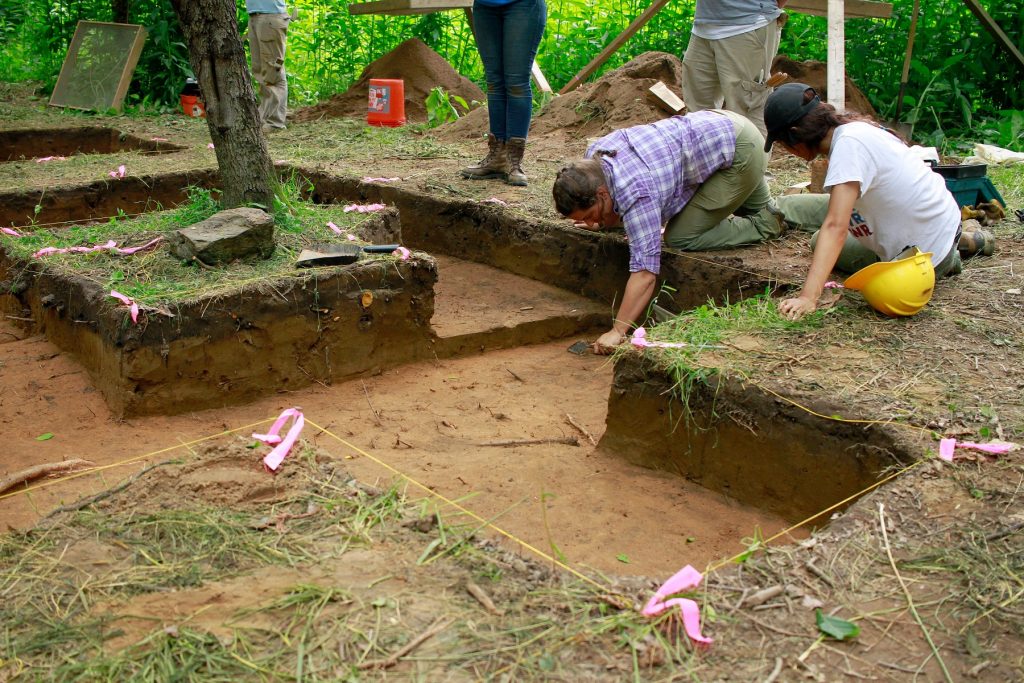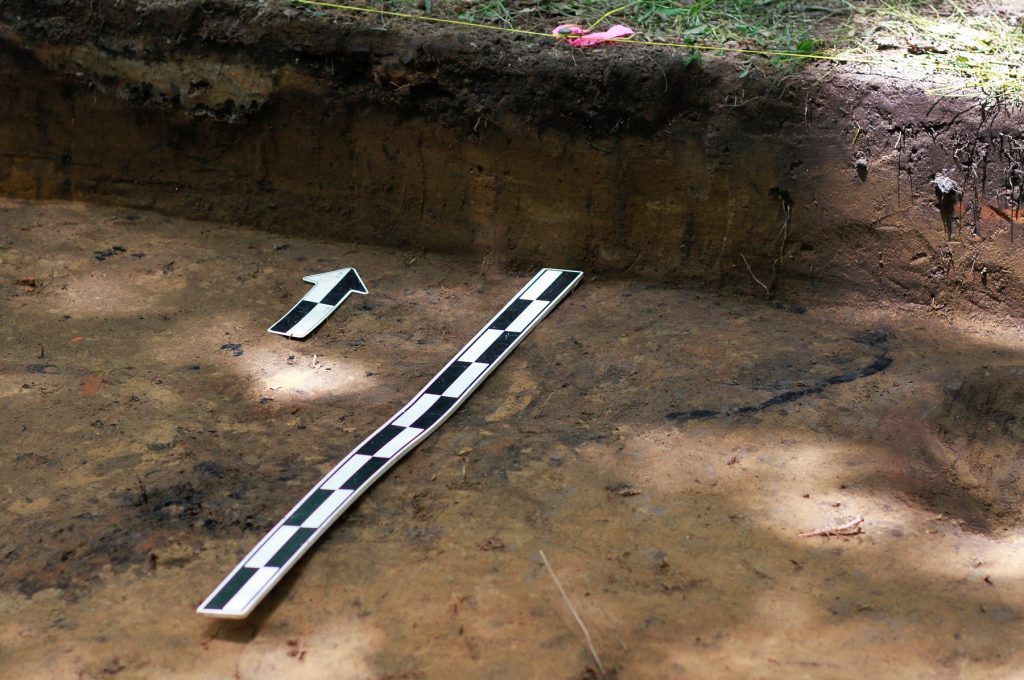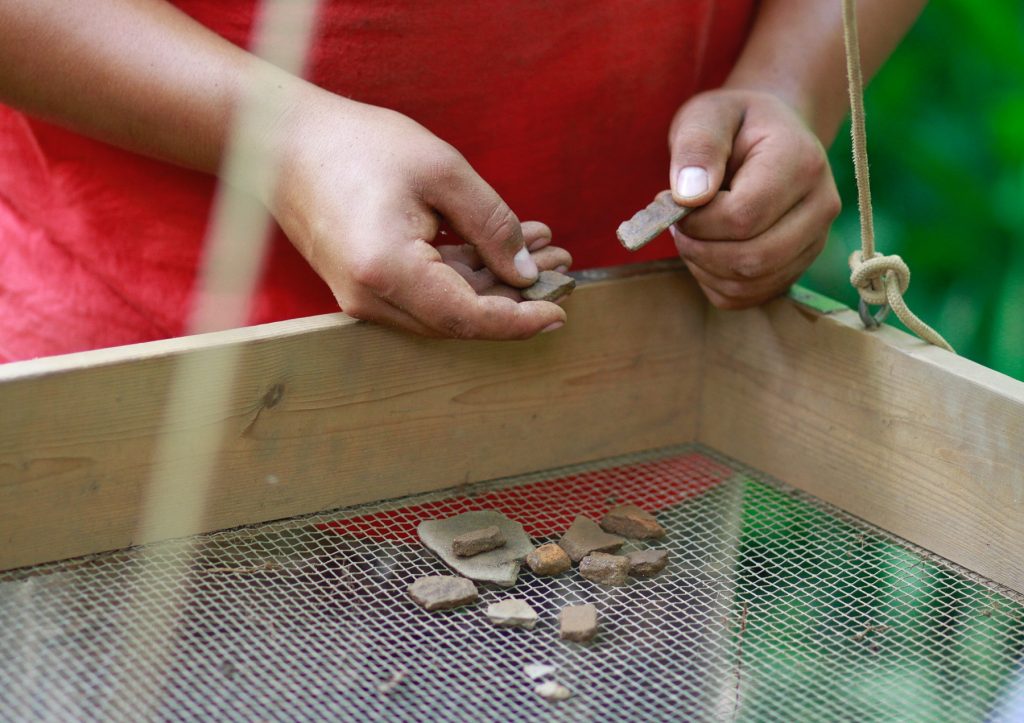A Discovery In Ga. Uncovers Details From A Horrific Time In Native American History

At an archaeological site in Georgia’s Blue Ridge foothills, in the deep woods of Stephens County, researchers sift through dirt to find pieces of pottery and other evidence to understand the era in the early 1600s when Native Americans’ lives and culture were disrupted.
Kaitlin Kolarik / WABE
Nineteen-year-old Tim Pigeon is from small-town Oklahoma, but he’s spent time the past two summers in Georgia’s Blue Ridge foothills, in the deep woods of Stephens County.
He’s helping out at an archaeological site there, sifting through dirt to find pieces of pottery.
Pigeon is part of the United Keetoowah Band of Cherokee Indians, and he says the shattered pieces of pots he finds could have been made by people he’s descended from.
“It’s like, wow, that could have been made from my bloodline, I could be further down from the person that touched and made this piece of pottery,” he says. “Just finding out where and how ancestors lived, it’ll get to you.”
So, for Pigeon, this archaeological site, first researched after ATVs and pickups had scraped the place up, may be part of his past.

For archaeologists, the place is an important piece of a cultural and historical puzzle, revealing the history of northeast Georgia before Europeans settled there, but after Spanish explorers had passed through.
The assumption had been that people didn’t live in this part of Georgia at that time, says James Wettstead, archaeologist for the Chattahoochee-Oconee National Forest. This site shows that was wrong. There’s a foundation for a wood and mud house, and evidence of two hearths.
“You can see we have this line of black soil and charcoal,” says Wettstead, showing the stained ground at the bottom of a neatly dug rectangular hole. “This is the corner of the house that was here 400 years ago.”
‘An Apocalypse’

It’s an important era to understand, says Wettstead, because it was tumultuous. In the early 1600s, Europeans were beginning to disrupt Native American cultures.
“A lot of the societies were falling apart from the after-effects of the Spanish explorers,” he says.
Large, stable populations broke down. Ninety-five percent of people died as a result of disease and disruptions to food, transportation and political systems, says archaeologist Jim Langford, president of the Coosawattee Foundation.
“I call it an apocalypse,” he says, comparing what was going on then, to movies like “The Road” and “Mad Max.” “We’re seeing movement of those populations, people trying to band together as people died.”
Langford, who’s familiar with the site but not directly involved with it, says that while other parts of Georgia have been pretty well-studied, the northeast part of the state is still a bit of a mystery. Archaeologists don’t know what exactly happened there as societies broke down and people began moving.
“To be able to learn about what those disturbances meant to people just trying to live day to day gives us an opportunity that we don’t have in many other sites,” says Wettstead.
Connection To History

The site’s in good condition, a rare find, since places are often affected by erosion, farming or looting.
Based on the patterns on the pottery there, the settlement in the Chattahoochee-Oconee National Forest appears to have been inhabited by ancestors of the Cherokee people, Wettstead says.
That’s personal for Pigeon, who works on the site as part of a Youth Conservation Corps program. He says he’s considering archaeology as a career and wants to keep a connection to history.
“We’re running out of elders,” he says. “You gotta keep it going. And if you don’t, of course, like anything, it’ll just die out. You don’t keep stoking up a fire it’ll die out. That’s what I kind of think about this.”








